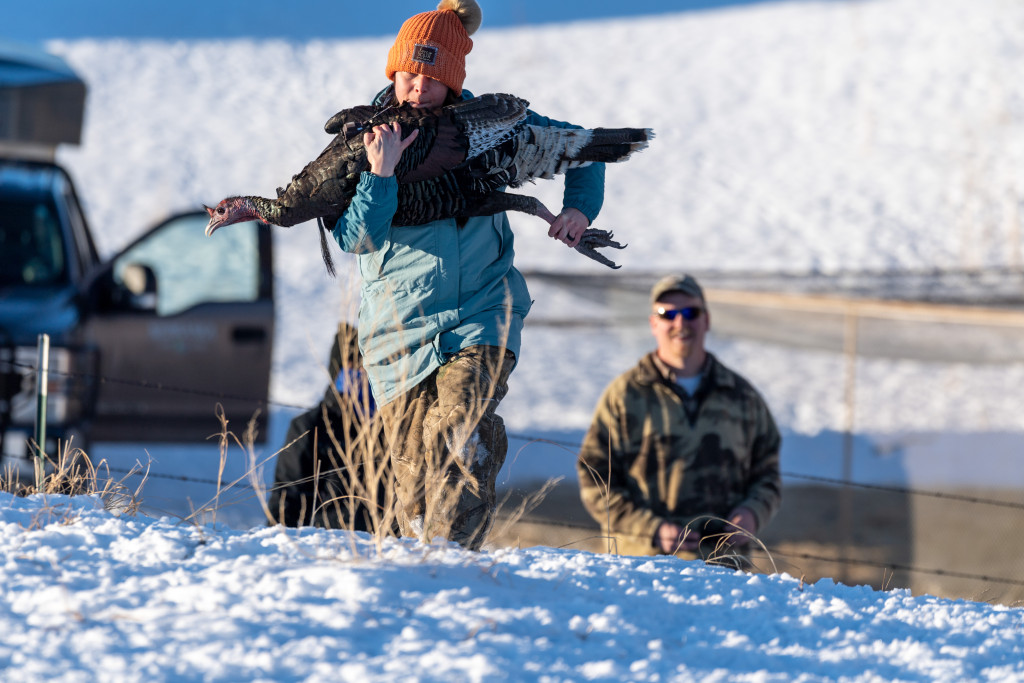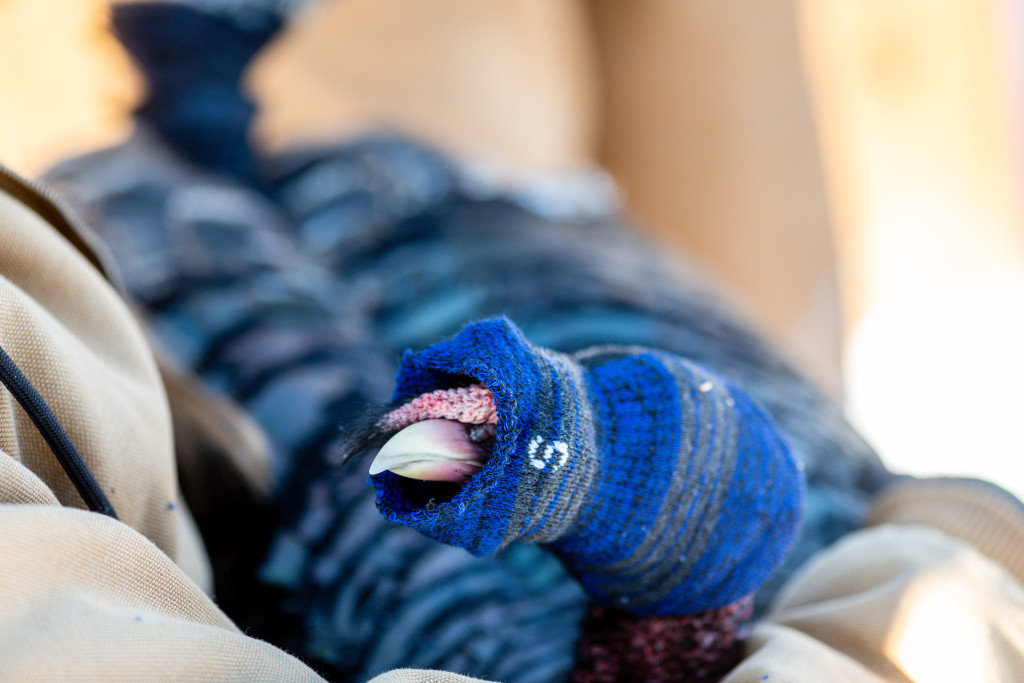
By Justin Haag
A new research effort is aiming to uncover mysteries about Nebraska’s wild turkeys.
University of Nebraska-Lincoln researchers have teamed up with Nebraska Game and Parks to trap turkeys, measure them, collect samples and outfit them with GPS transmitters and leg bands. Over time, researchers will learn about turkey movements, habitat selection, nesting success and genetic diversity.
These variables all play a role in wild turkey population numbers, which have shown a decline in many regions of the state and nation in recent years.
Trapping began in late January and February at multiple sites near Crawford and Trenton. About 60 turkeys, with a desired ratio of toms, hens and juveniles, will be tagged in each the northwest and the southwest regions for three consecutive years. Data collected will be used to inform management of the game bird, which has a lifespan of 3 to 5 years.

“Understanding wild turkey populations will allow us to hone in on the most important variables leading to their declines,” said Andrew Little, assistant professor at Nebraska and co-lead on the project. “We know with any ground-nesting bird, it’s a complex situation.”
He looks forward to calls from hunters who harvest banded turkeys this spring. Hunters will learn a little about their birds, including where they were trapped. ■
Follow along with the project at awesmlab.unl.edu, necoopunit.unl.edu or outdoornebraska.org.
